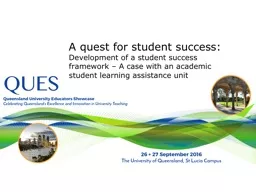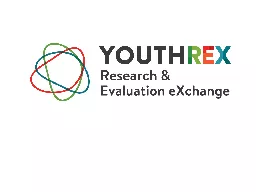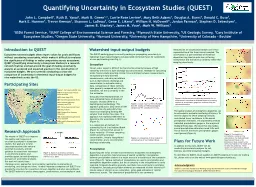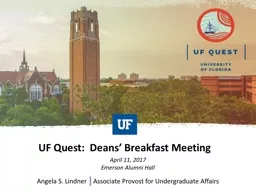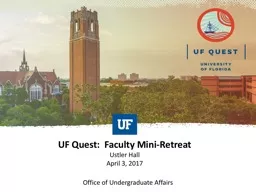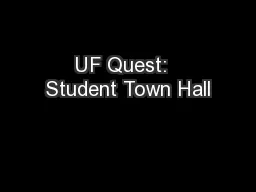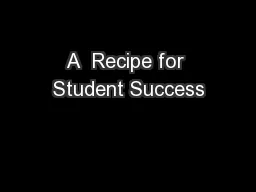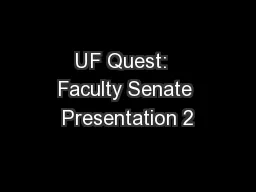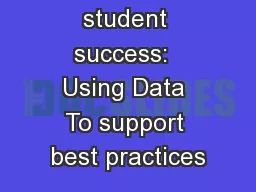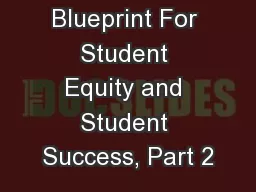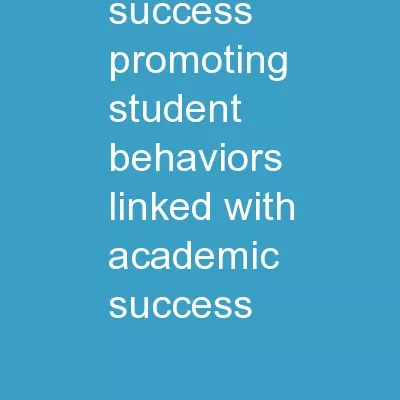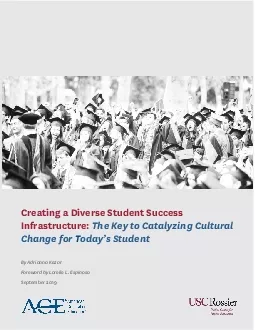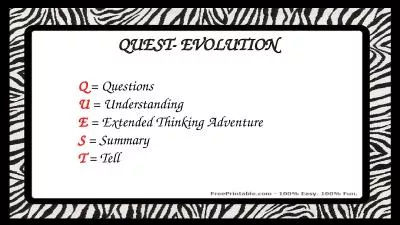PPT-A quest for student success:
Author : barbara | Published Date : 2021-01-28
Development of a student success framework A case with an academic student learning assistance unit Presentation outline Who are we Why did we do it What was
Presentation Embed Code
Download Presentation
Download Presentation The PPT/PDF document "A quest for student success:" is the property of its rightful owner. Permission is granted to download and print the materials on this website for personal, non-commercial use only, and to display it on your personal computer provided you do not modify the materials and that you retain all copyright notices contained in the materials. By downloading content from our website, you accept the terms of this agreement.
A quest for student success:: Transcript
Development of a student success framework A case with an academic student learning assistance unit Presentation outline Who are we Why did we do it What was the quest What does the student success framework look like . Service district profile. 26%. have not completed high school. 35%. . less . per capita income than . WA . State. 43%. Latino. Data source: US Census Bureau 2013 Quick Facts. Students – 1,903 Total . Copyright Lions Quest Canada 2014. Reframing How We . Work With Young People . Positive Youth Development – Canadian Style . Patricia Howell-Blackmore. Lions Quest Canada – . The Centre for Positive Youth Development. John L. Campbell. 1. , Ruth D. Yanai. 2. , Mark B. . Green. 1,3. , Carrie . Rose . Levine. 2. , Mary Beth Adams. 1. , Douglas A. Burns. 4. ,. . Donald C. Buso. 5. , . Mark E. Harmon. 6. , Trevor Keenan. Research Tool: a Remarkable Intersection. dirk.kinable@ivdnt.org. The Quest for Dictionaries as a Research Tool: a Remarkable Intersection. Changes in the concept of a . dictionary. .. Printed. . dictionaries. Angela S. Lindner Associate Provost for Undergraduate Affairs. April 11, 2017. Emerson Alumni Hall. Objectives of This Presentation. Brief overview . Provide status of UF Quest planning. Revea. l new proposed framework. Ustler. Hall. April 3, 2017. Office of Undergraduate Affairs. UF Quest: Faculty Mini-Retreat. Angela S. Lindner Associate Provost for Undergraduate Affairs. Proposed UF Quest Framework and . Relevant Questions. Pugh Hall, . O. cora. March 30, 2017. SACUA Student Advisory Council for Undergraduate Affairs. UF Quest: Student Town Hall. Angela S. Lindner Associate Provost for Undergraduate Affairs. Background, Development, and Path Ahead. :. Examining the Essential Ingredients of . Student Success Courses at Leader. College. Institutions. . Dr. Pam Millsap . Department Chair. Social and Behavioral Sciences. College of the Mainland. Dr. Lynda Villanueva. New Proposed Model. Angela S. Lindner Associate Provost for Undergraduate Affairs. Faculty Senate Presentations. March Meeting. Background on pre-eminence program for undergraduates. Actions to date. Service district profile. 26%. have not completed high school. 35%. . less . per capita income than . WA . State. 43%. Latino. Data source: US Census Bureau 2013 Quick Facts. Students – 1,903 Total . We Are Making Progress!. . . Let’s Keep It Going…. Lessons Learned from Our First Workshop. Creating A Blueprint for Student Equity and Success . Sami Johnson, Student Success Programs. Samantha.r.Johnson@ndsu.edu. Casey Peterson, Student Success Programs . casey.Peterson@ndsu.edu. Mark Hanson, Institutional Research & Analysis. mark.g.hanson@ndsu.edu. AmericanCouncil onEducation 2Adrianna Kezar is the Dean146s Professor for Higher Education Leadership at the University of Southern California and director of the Pullias Center for Higher Education a U . = Understanding. E . = Extended Thinking Adventure. S. = Summary. T . = Tell. quest CHECK- INVERTS. Directions-. Number your journal #. 1-10.. You will answer questions about . MOLLUSKS.. You .
Download Document
Here is the link to download the presentation.
"A quest for student success:"The content belongs to its owner. You may download and print it for personal use, without modification, and keep all copyright notices. By downloading, you agree to these terms.
Related Documents

